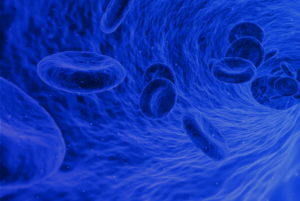The use of allogeneic blood exposes patients to the risk of non-screenable transmittable diseases. Due to these risks, and since blood is a limited resource, perfusionist strategies for blood conservation continue to be developed.
Here we will review some of the methodology involved for effective blood conservation practice.
Blood Management Program
Effective blood resource management goes beyond a random collection of protocols and techniques. Rather, a cohesive multidisciplinary, multimodality strategy is more effective. Such an approach should include:
- Documented policies and procedures
- Rigid transfusion criteria
- Evidenced-based techniques
- A blood management team that governs the program (physicians, blood bank directors, nursing supervisors, and perfusionists)
Now let’s look at some more specific perfusionist strategies for blood conservation.
Autologous Blood
Using the patient’s own (autologous) blood avoids many of the risks (transmissible disease and cross-matching errors) associated with allogeneic blood. Also, for personal or religious reasons, many patients might refuse allogeneic blood transfusions. Additionally, patients with multiple red blood cell (RBC) antibodies or unusual blood phenotypes find it difficult to obtain blood.
Drawbacks to pre-surgical auto-donation are the time and visits required to accumulate the blood as well as storage and phlebotomy costs.
Blood Removal Prior to CBP
Another method of obtaining a patient’s blood is by removal just prior to cardiopulmonary bypass (CPB). After heparinization and cannulation, blood can be removed by a venous line and a Y connection to a collection bag. Later, the patient can be infused through an arterial cannula to maintain adequate arterial blood pressure. Some studies show blood saved in this manner decreases post-op bleeding by preserving coagulation factors and platelets.
One drawback of preoperative blood removal is that the patient’s hematocrit must be high enough to withstand the blood loss. Also, for patients with ischemic heart disease, some surgeons are reluctant to use this method of blood conservation.
Autologous Priming
Another perfusionist strategy for blood conservation involves removing crystalloid in the CPB circuit and replacing it with the patient’s own blood just prior to bypass. This method minimizes hemodilution and, therefore, preserves the patient’s hematocrit.
Removal of crystalloid via autologous priming can be accomplished at nearly any point in the CPB circuit. Since the process must be completed gradually, perfusionists must coordinate with anesthesia to maintain adequate arterial blood pressure. The recirculation line on the oxygenator is a commonly used site for crystalloid removal.
Autotransfusion (Cell Washing)
Autotransfusion involves aspirating blood from the surgical field with a special suction line into a holding cardiotomy. Also, remaining blood can be salvaged from the CPB oxygenator and circuit and drainage devices (chest tubes) at the end of the operation.
The cell saver collects the shed blood from the operative site and mixes it with heparinized saline, it then separates RBCs via centrifugation, washes the red cells, and diverts them to an infusion bag.
One risk to autotransfusion is that inadequate washing may leave heparin residue which may cause bleeding. Also, autotransfusion products are devoid of platelets and clotting factors.
Plasmapheresis and Plateletpheresis
Plasmapheresis and plateletpheresis remove plasma or platelets from whole blood and then return the red blood cells back to the patient. This procedure harvests platelets and other clotting factors while preserving hematocrit during bypass.
Uncontaminated blood is drawn into a centrifuge which separates the blood products. The collected RBCs can be transfused back immediately to the patient or held for use later.
Hemoconcentrators
Hemoconcentrators remove fluid from the patient’s vascular system, which increases the hematocrit. The removed fluid consists of plasma water and solutes. Meanwhile, solutions can be added to the pump volume to control electrolyte concentrations if necessary.
The hemoconcentrator forces fluid and small solutes across a semipermeable membrane while larger formed blood elements cannot cross. Membrane pore sizes range from 15,000-55,000 daltons which enable electrolytes, creatinine, urea, and glucose to be removed. Likewise, heparin can also be removed in this process. Also, the level of circulating drugs may also be lowered by removing plasma.
Finally, any residual blood left in the pump circuit can be salvaged and concentrated with the hemoconcentrator after CPB is completed.
Conclusion
Blood is a valuable resource that also carries inherent risks. Some, or all, of these perfusionist strategies for blood conservation, should be implemented in any healthcare center’s approach to quality patient care.
Article reference:
Blood Conservation Summary






